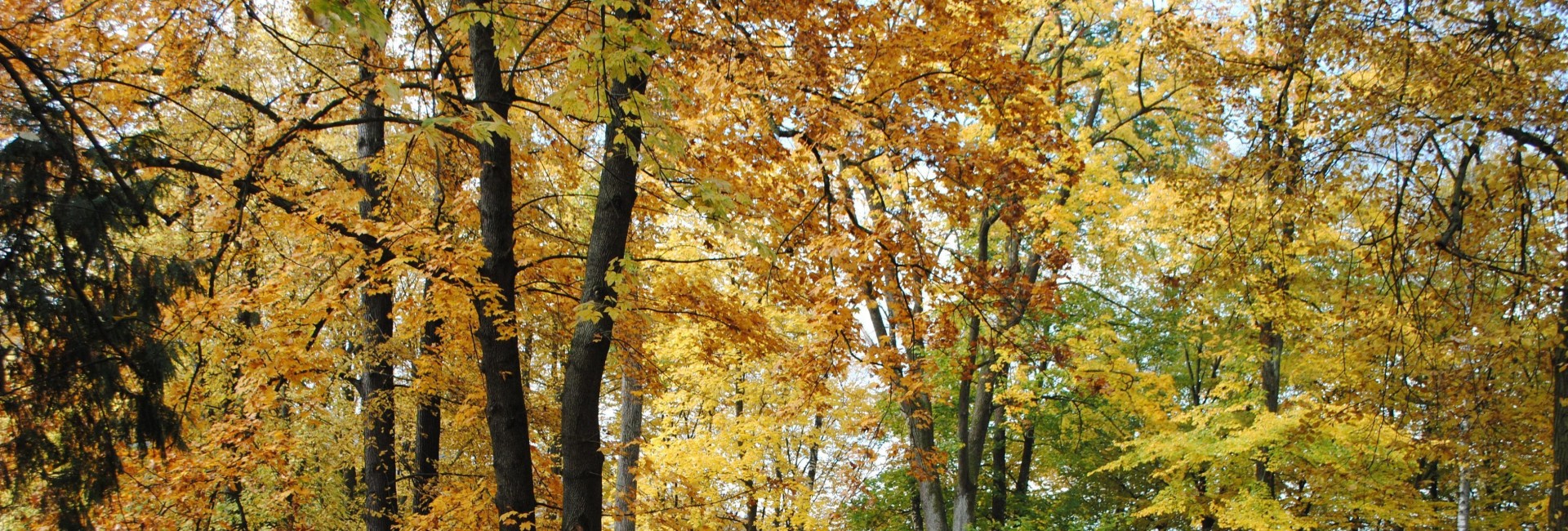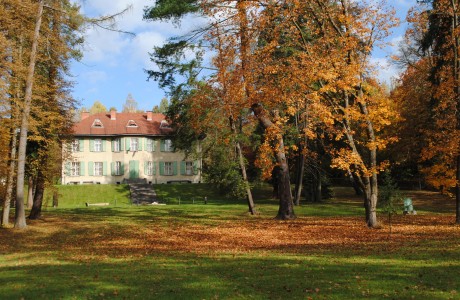Forest park at Kysuce Gallery in Oščadnica
Forest park at Kysuce Gallery in Oščadnica
The park now houses a (non-) permanent exhibition of outdoor sculpture, which has been under construction since 2001 when the first year of the International Sculpture Symposium was held.
History
Description of the park
The mountain park was created by modifying the already existing forest environment, shaping it and supplementing it with new plantings, creating overlooks, improving the peripheral parts and building access roads.
The mayor had a plan drawn up for the road network that was to be built here. The original network of paths has been preserved to this day. Fifty benches were installed in the park, a caretaker's house was built at the main entrance and a playground was also built in 1873. Two wells were used for irrigation. The park area was also beautified by small iron structures - gloriettes, a small pavilion with folded benches or a metal lookout tower on the Murmanská hill. New benches were continuously added to the park. In 1907, for example, the Municipal Beautification Association had round benches made by the Marton company (some of them are still preserved today). In that year, 25 plaques with poems by local poets were also fixed to the trees. For the protection of animals and birds, 20 bird feeders and bird boxes were erected.
The park was created during the period of an artistic movement called Realism, during which nature-landscaping was promoted in garden art and interest in non-native tree species increased as well. Due to the harsher natural conditions that the Mountain Park has (rugged terrain, different sun exposure, different humidity conditions), the tendency to plant a more diverse range of plants has not been strongly applied and the Mountain Park has retained the character of an older woodland park.
Fauna and flora of the park
At the end of the 19th century, many new species of trees were planted in the park, such as groups of yew, lime and plane trees, as well as ginkgo and various foreign conifers. Today there are 50 species of introduced trees. From a national point of view, the occurrence of the Golden larch (Pseudolarix amabilis) is significant. Also significant are the massive specimens of trees - many of them reach a height of 30-35 m (ponderosa pine (Pinus ponderosa), beech, sycamore, common ash). The most common of the deciduous trees is horse chestnut. Black walnut is also found here. Among the coniferous species, there are the following: Japanese cedar (Cryptomeria japonica), eastern hemlock (Tsuga canadensis), yew and a group of dawn redwood trees (Metasequoia glyptostroboides). There is also a single specimen of ginkgo.
Current use
Today, the park is located in the geographical centre of the city, which has grown in all directions and its area has stabilised at 22.96 hectares. The park is situated at an altitude of between 185 and 260 metres above sea level and is spread over two converging valleys, a mountain spine between them and on terraced plateaux. The natural centre of the park is the Justi’s Monument with its resting terrace. This monument was erected by the city in 1908 after his death and is the work of the Bratislava sculptor Alojz Rigele, who was also a member of the Bratislava Beautification Society. In front of the entrance to the park from Nekrasova Street there is a monument to the botanist J. A. Bäumler, also by the sculptor Alojz Rigele.
Today, the historic “Horský Park” (Mountain park) mountain hut, which has become a popular place of rest, a meeting place for people and an original cultural centre of Bratislava, also belongs inseparably to the park. It also includes a garden with a children's playground and a libresso with excellent coffee and traditional Bratislava walnut and poppy seed rolls. During summer, various cultural and social events are held here. The hut has been renovated and opened to the public by the Mountain Park Foundation, which is also strongly committed to the protection and meaningful use of the Mountain Park today.
The Mountain Park Gallery is also part of the garden - the only outdoor gallery of contemporary Slovak sculptural art. In 2014, a new nature trail with information boards was added by the Mountain Park Foundation.
Contact
023 01 Oščadnica
telefón: 041/433 21 66
fax: 041/433 21 66
e-mail: kys.galeria@vuczilina.sk
Plan your way
Oščadnica can be reached by car, bus and train. The manor is located about 100 m to the left of the roundabout at the beginning of the village.Opening hours
The forest park is open to the public non-stop










